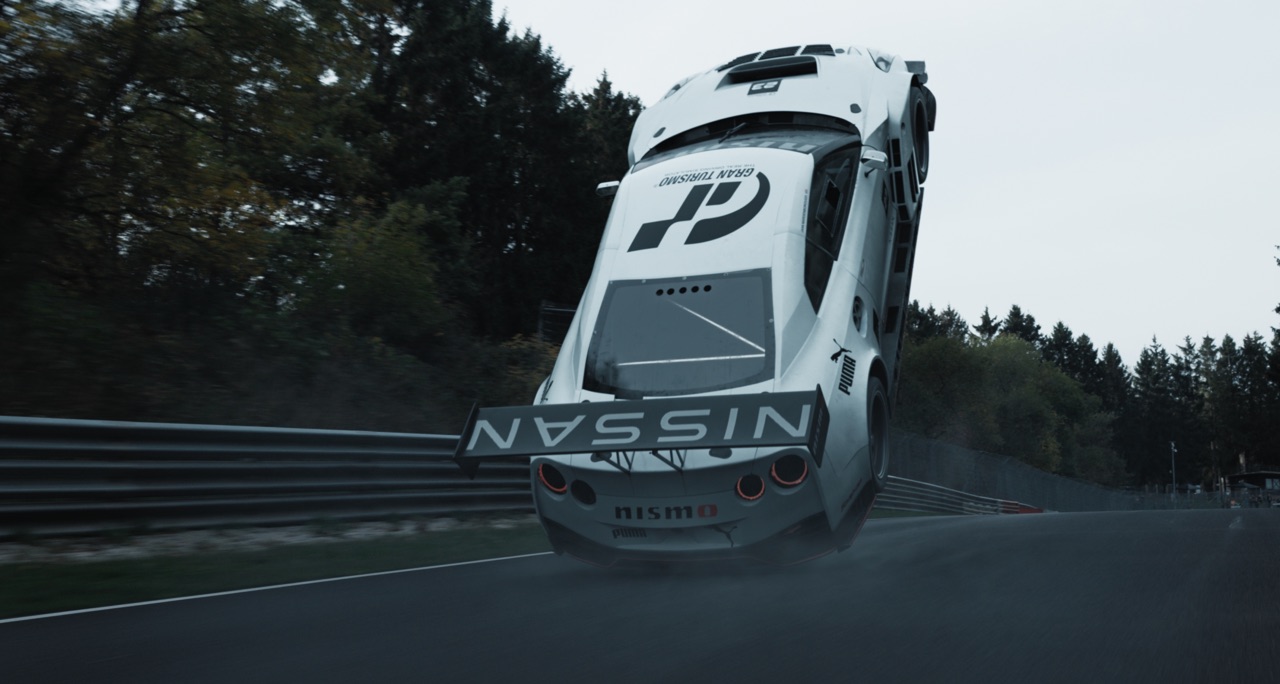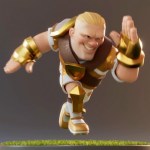Behind the invisible effects for the cat, environments, weather and de-ageing in the film.
Marc Forster’s A Man Called Otto is most certainly not a visual effects film, but it does feature a wide variety of key invisible effects work.
A number of techniques were used to bring the stray cat taken in by Otto (Tom Hanks) to life, including greenscreen shooting and CG. Then there were a raft of environment extensions including a train platform and a suburban location of the film, plus dealing with weather continuity.
Visual effects supervisor Janelle Ralla breaks down the work for before & afters.
b&a: This is sometimes my favorite kind of film where I feel like it’s absolutely all about invisible effects. Is there something you can say about working on a film like that and the early kinds of conversations you might have had with Marc Forster about it?
Janelle Ralla: Marc is such a lovely director to work for. He is so concise and kind. I joined the film quite late in the process. Marc called and convinced me to come out of VFX hibernation. I flew out to Pittsburgh a few weeks before the shoot and got up to speed fast. We quickly assembled an on set team and workflow in a matter of days. Leo Bovell joined me as co-sup and on-set supervised principal photography. They were battling a lot of weather, Pittsburgh in the winter is not pleasant. It’s very cold! It was a tough shoot.
Otto was not a visual effects film, so although some of the VFX moments had big fx and had to blend seamlessly with the photography, data acquisition was often slightly more challenging than it would be on a big blockbuster film. Most of the exterior of the film was shot on 35mm film which brought its own set of fun challenges as well.
b&a: Can you break down how you approached the cat?
Janelle Ralla: The cat was such an important character in the film. The cat was shot in situ as much as possible during principal photography but the schedule was tight and cats don’t work fast. We had to sometimes shoot with a grey stuffy, nothing at all or with a splinter crew picking up the cat to split in comp. We ended up doing several pickup shoots with the cat. About 10% of the cat ended up being all in-camera and about 20% CG cat. The rest are cat comps, greenscreen plates comped in to the photography.


JAMM Visual, led by Kevin Pierce, completed all of the cat work. They did the CG cat and they did all of the cat comps, which turned out very well. When the cat’s getting dragged under the car and the frozen cat scenes, those are all cg…there’s no way to do that with a real cat.
I remember when we were scouting, Marc was casting cats and he was showing me pictures and I said, ‘That one,’ because of course it’s short hair and it doesn’t have a crazy fur pattern. Marc was like, ‘Oh, but look at this one, it’s so beautiful,’ and it’s this fluffy cat that has the finest fluffiest hair you can imagine! I was like, ‘Um, not that one!,’ but he insisted. In the end, the fluffy cat was pretty great and of course, he was perfect with Tom. His name was Smeagol and there was also a cat double we used a few times.
They ended up loving the cat so much after the first director’s cut that they wanted more cat. Our talented assistant editor Brad Besser scoured through the different cat plates and came up with new shots the cat could be in. For example there was a beautiful wide shot of Tom sitting there writing his letter. Now in the final shot is the cat stretching down at the bottom of the frame, really completing the shot.


Then there’s the cat at the end that’s in the truck and jumps off of the car seat and down into the front seat. That scene was never meant to have a cat. We did crude temps to get the point across and everyone was like, ‘Oh my gosh, we love the cat there.’ So then we did specific pickups for cat plates for the extra moments. I love when VFX can help enhance the story like that.
b&a: The other sequences that I thought might have involved more visual effects than people would realize are the train platform ones. How did you approach those?
Janelle Ralla: The first one when he’s with Sonya, the interior train ride is actually practical which was nice. That was shot on a train with minor enhancements throughout the scene like adding cars. The exterior train station in that flashback scene had enviro work to make the old run down station look new and also additional trains were added to fill up the station to help with the ambiance. Territory VFX, led by Caroline Pires, did the work on the exterior.
The second train scene, the suicide attempt, has a lot of CG. Axis Studios led by Simon Carr and Howard Jones in London completed that train scene along with hundreds of other shots in the film. The set was a cement plaza area with some buildings around it. A train platform was built and a very small set of tracks, and the rest was full set extension and CG train. That shoot day was particularly challenging because of weather so there were pickups over greenscreen to complete the coverage at a later date. Our train was modeled after the Chicago L Train. It had the vibe that Marc was after. He wanted a dour industrial feel to the environment that added to the gloom of the scene.


b&a: There’s a couple of people shooting videos or taking selfies there. I was trying to watch it and work out whether any of those required visual effects as well.
Janelle Ralla: All those people on the train platform had actual iPhones and they were shooting. It was good fun sifting through that footage and then having to complete set extensions on it.
b&a: Was there some de-ageing work in this movie, too?
Janelle Ralla: SSFX did all of the de-ageing in the film. In a few scenes, we actually took Truman, who is Tom Hanks’ real son, and we made him look a little older. And then, there were a couple scenes where we de-aged Tom and de-aged the Reuben character.

Once actors hit a certain age and eye and other skin starts to fold and grow, it’s a fine line with how much de-ageing you’re able to do before the actor looks over-processed. Amrei Bronnenmeyer and her team did an excellent job with this effect. We not only modified their faces and hair but also straightened posture as needed.
b&a: What were some of the other invisible effects you worked on?
Janelle Ralla: One of the other bigger visual effects in the film was the neighborhood. Birchwood Estates at the end of the street was all CG. It was only meant to appear in two wide shots but it ended up appearing throughout the whole movie.

Marc wanted a big condo complex that peered down on Otto’s neighborhood and street. That’s part of the story point, that Otto becomes boxed in. He used to have this beautiful birchwood forest on both sides, and then as the years went on, they chopped it down, and then they built Birchwood Estates, which is this condo complex. The production designer had a specific neighborhood in mind that she wanted so we captured parts of that neighborhood with lidar and plates, modifying and rebuilding it at the end of Otto’s street.
During the flashbacks we see the Birchwood forest on both sides, Crafty Apes built our lovely forest. It showed how secluded and pretty his neighborhood used to be before the condo complex was built surrounding him.


The story is meant to be snowy, Otto is a cold lonely man and the weather reflects his demeanor. I think we got a couple days of snow. And then, it would dry up, and then it would rain, then it would be sunny, cloudy, then snow again. Given the unpredictable weather there were a lot of weather continuity shots and we had quite a few VFX houses helping us with that up until the very end, just trying to make the weather match.
For the scene where Tom meets that real estate developer it was very important to Marc that it was a cold blanketed snowy morning. Goodbye Kansas took a scene with hardly any snow at all and covered the whole neighborhood with freshly fallen snow including when Tom is running through the snow and the guy is driving through it. On the flip side the flashback scenes in the film were meant to be rich in tone and color as Otto remembers the good ole days. Tryptyc “springified” many wintery Pittsburgh shots making them warm and happy.
Axis built the not yet released Chevy Silverado EV. We shot with an older Silverado and replaced the truck in post.

For every suicide attempt, VFX assisted. For the hanging, we did light leaks and helped transition from shot to shot helping with the idea of oxygen deprivation but also making his memories beautiful. For the car in the garage scene we added all of the exhaust smoke which was also a transitionary element to take us into the train platform flashbacks where he meets Sonya.
Then there was of course the suicide attempt at the train platform in the cg environment and cg train. Lastly there was the shotgun scene where we helped with transitions but also beautified a barren landscape adding a dreamy forest that they are riding a bus through in the flashback before assisting with the crash itself and the aftermath damage. Light VFX added this beautiful surreal looking forest filled with cherry blossoms and greenery. They also created a wonderful all cg time lapse shot at the end of the film that signified the passage of seasons.
It was almost 1,000 shots needing seamless effects, grown from the original 200 called out. Everyone came together in the short time that we had to do it.
Most importantly the film means a lot to people. More than a few people, especially older ones, have told me how much the film touched them. It gave them hope. I’m very proud to have been a part of it.
Buy A Man Called Otto at Amazon.


















